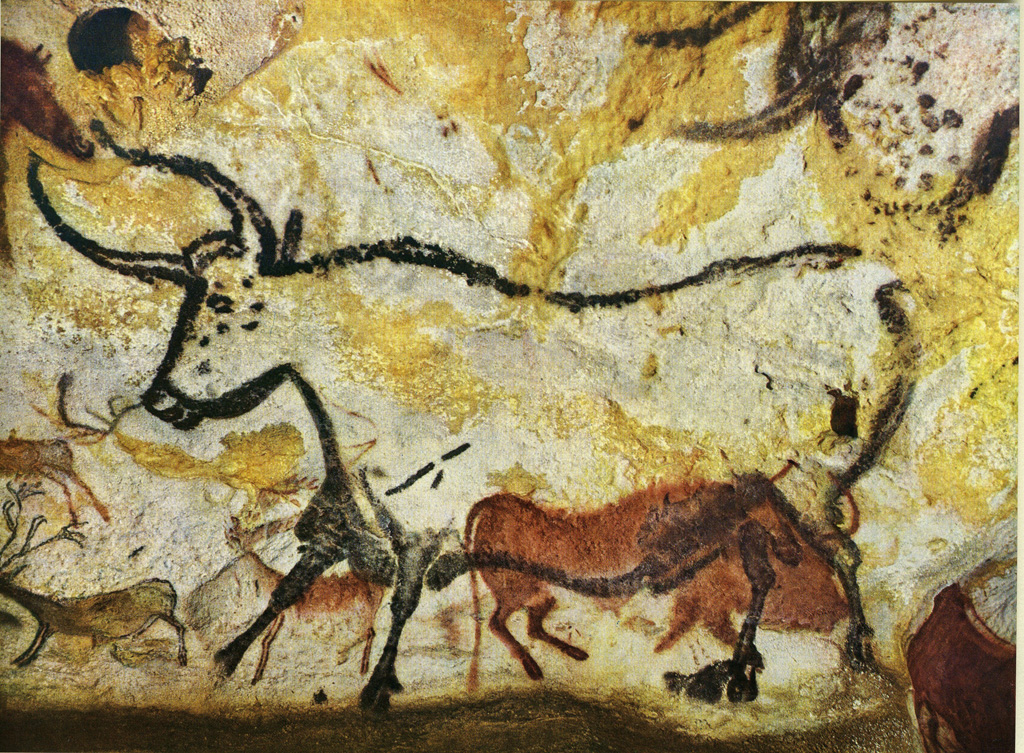Case Study - the San of South Africa
Modern
hunting people, even those who paint on rocks, are not frozen replicas
of Paleolithic man, as David Lewis-Williams acknowledges in his influential
book The Mind in the Cave, but without the testimony of hunting societies,
modern archeologists are just guessing, mostly from their own biases.
Modern hunting societies are the closest thing we have to being Bahn's
informants.
Lewis-Williams uses the San of South Africa as a case study (136). The
San are a primitive tribe with both rock painting and shamanic traditions,
and a long history of cooperation with researchers. The central religious
event to the San was a circular dance, attended by the entire tribe, around
a fire, with women sitting, clapping and singing, and men dancing around
the women. This went on for hours while many men and women would fall
into trance. While in trance, the man or woman would transform into a
lion or some other animal. God has given potency, a kind of electricity,
to both humans and the greater animals. Up to half the men and a third
of the women have the ability to go into trance and have visions. Lewis
translates the San word for people with this ability as Shaman. Through
trance, the San Shaman enter the other world (138).
"In deep trance, the shamans' spirits are believed to leave their
bodies through the top of the head. They may then travel to other parts
of the country to find out how friends and relatives are faring, or they
may go to God's house, where they plead for the lives of the sick.(141)"
In the late 1800's when the ethnographic studies on the San began, they were still living the lives of hunters, still painting on the rock walls of Southern Africa, not what they saw around them in the day, but what they saw in trance. The rock walls not only give the vision to ordinary people, "they are the 'veil' between the material and spiritual realms"(162). The drawings themselves carried the potency of the vision. Shamans could capture a rain-animal, a mythical creature, under a water hole, take it into the sky, butcher it and spread its blood and milk as rain, fertilizing the world, then paint the scene for all to see (Lewis-Williams 149). Even the paint itself was an object of power. The blood of an eland, the largest antelope and the most potent animal master to the San, was mixed with red paint (159). A person could absorb potency not only by looking at the painting but by putting his hand on it (160).

Prehistoric Painting: Lascaux - or the Birth of Art, text by Georges Bataille, photos by Hans Hinz, Claudio Emmer. Albert Skira publisher, Switzerland, 1955.